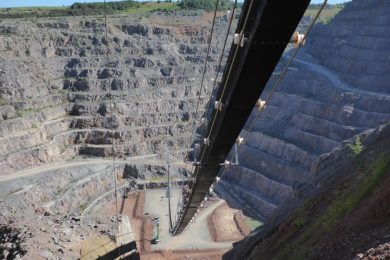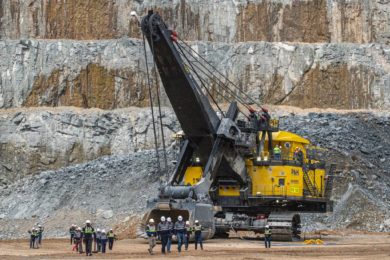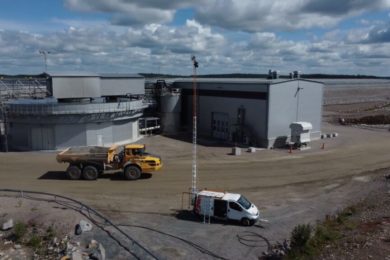In early 2020, IM reported on how a Doppelmayr RopeCon® system was to help Aggregate Industries with an innovative backfill solution at its Bardon Hill quarry, in Leicestershire, England, which is one of the largest in the UK, producing over 4 Mt/y of granite aggregate. The high angle conveyor is now almost complete, with the ropes and belt are pulled, the mechanical assembly almost complete and the electrical team has now arrived on site. It will transport approximately 1,000 t/h of overburden over a distance of 500 m.
Aggregate Industries has developed a quarry extension at this strategically important site, one of the UK’s oldest continuously operated quarries, extending mineral production for a further 27 years. During the initial 14 years of production, over 12 Mm3 of overburden must be progressively extracted. This will be processed and conveyed for emplacement within the existing exhausted quarry to a depth of 125 m. A road haulage solution was not permitted due to the generation of considerable CO2 emissions, while a conventional conveyor system would have been very costly due to the length and number of transfer points required to navigate the existing quarry haul roads.
The proven RopeCon system, a combination of ropeway technology and conventional conveying technology, spans 850 m across the entire pit with track ropes. The belt, which transports the overburden, moves on these steel wire track ropes and the material can be transferred onto a second belt directly in the rope span. This creates a second discharge point at a distance of approximately 100 m from the first discharge point. Depending on where the material is needed, either the first or the second discharge point can be used. To solve the problem of drop height, a concept has been developed that gradually reduces the sag as the backfill progresses. The drop height can thus be kept below 45 m at all times to minimise the impact from noise and dust during operation of the system.










